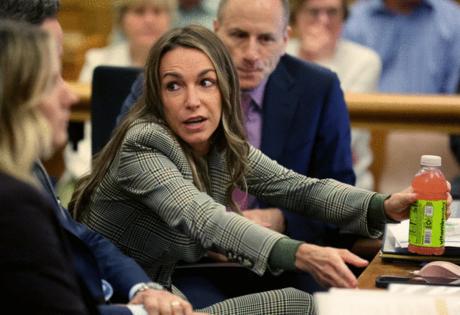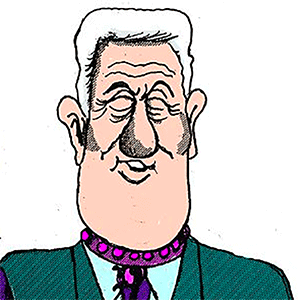Karen Read retrial: Another expert testifies to 'Hos long to die in cold' search
Published in News & Features
DEDHAM, Mass. — A digital forensic expert backed up the prosecution’s timeline Wednesday in the Karen Read murder case, testifying that a notorious google search questioning “hos long to die in cold” did not happen until after Boston Police officer John O’Keefe’s body was discovered.
“What I can state with a scientific degree of certainty is that that search occurred at 6:24 a.m. and was the last search in the tab that had been opened at 2:27,” Jessica Hyde, the founder of and an investigator for the Bridgeport, New York-based digital forensics firm Hexordia, testified Wednesday in the 11th day of Read’s retrial.
Hyde was testifying to the timing of the Google search made by Jennifer McCabe, a central witness in the case.
The time that McCabe made the search regarding hypothermia is one of the most hotly contested pieces of evidence in the complex case.
Read, 45, of Mansfield faces charges of second-degree murder, manslaughter while operating a motor vehicle under the influence, and leaving the scene of a collision causing death.
Prosecutors say she struck O’Keefe, a Boston cop she had dated for two years at the time, with her Lexus SUV and left him to freeze and die on the front lawn of 34 Fairview Road in Canton in the early morning of Jan. 29, 2022.
Wednesday saw testimony not only from Hyde but also from Massachusetts State Police Trooper Connor Keefe, a member of the investigative unit based at the Norfolk DA’s office who said that he performed the extraction of the phones of both McCabe and another woman, Kerry Roberts.
The day was the second in a row to end early. Judge Beverly J. Cannone told jurors that since the trial is apparently ahead of schedule they should go out and enjoy “the rest of this beautiful afternoon.”
‘Hos long to die in cold’
The prosecution has now brought in a second expert, Hyde, to testify that her analysis confirms McCabe’s own testimony of performing a search for “hos long to die in cold” — the first word is a misspelling of “how” — on her phone at 6:24 a.m. on Jan. 29 at Read’s request after the two, as well as Roberts, found O’Keefe on the lawn.
The defense counters that the search was actually made at 2:27 a.m., hours before O’Keefe would be discovered on the lawn, thus indicating prior knowledge of his fate and thus evidence of a conspiracy. They are expected to call their own digital forensics expert later in the trial to testify to this conclusion.
Most of Hyde’s testimony on Wednesday was a breakdown of how the analysis works, the tools she uses and colorful illustrations of how the phone’s various databases record data — at one point she made an analogy for ordering food and then sending it back to describe how the phone may record a deletion of a record.
But after the set-up came her conclusion: that McCabe made the search at 6:24 a.m. and that there is no evidence that the search was deleted. She explained that the 2:27 a.m. timestamp was when the Safari tab on McCabe’s iPhone used for the search was last interacted with before the search.
It’s the same conclusion reached by Ian Whiffin, who works for Cellebrite, one of the main companies that makes mobile forensic tools, and who testified earlier in the trial.
The disagreement about the timing of the search is so key to the case that prosecutor Brennan played yet another clip from a Read interview and left the jury with Read’s own words on the matter:
“Jen McCabe, it’s me or her,” Read said in the clip. “Either I’m going down, Jen, or you are.”
Challenging that analysis
The defense’s cross-examination of Hyde hinged largely on pointing out that all the forensic tools used both by Hyde and Whiffin showed a 2:24 a.m. timestamp “artifact” and that one can’t dismiss its relevance out of hand because no one can actually see how the iPhone is structured.
“Wouldn’t the best information be from the Apple source code?” defense attorney Robert Alessi asked.
Hyde agreed that it would, but since that code is proprietary and not open source — as is most commercial software — no one outside the company has access to it. Instead, professional digital forensics relies on “standard methodology” and tools that are forensically sound.
Alessi also suggested that Hyde was biased in her conclusions since she was paid for her work by the state and had also spoken at least 10 times with MSP Lt. Brian Tully, who led the Norfolk DA investigative unit at the time, as she worked on her analysis.
She confirmed both things but said she was not pressured to reach any conclusions and that her work was “independent of the District Attorney’s office.”
Taillight fragments
Jurors got to see both clear and red pieces of taillight the MSP recovered from the front yard. They were presented in court by Trooper Keefe, who was the first witness on Wednesday.
Keefe described his role in the investigation as more minor than that of others. He collected evidence found by an MSP unit at the scene, he did extractions of the phones of McCabe and Roberts, he attended O’Keefe’s autopsy, and he obtained surveillance video from a bar in Canton. But, he testified, he didn’t do the analysis or report on any of these.
_____
©2025 MediaNews Group, Inc. Visit at bostonherald.com. Distributed by Tribune Content Agency, LLC.







Comments